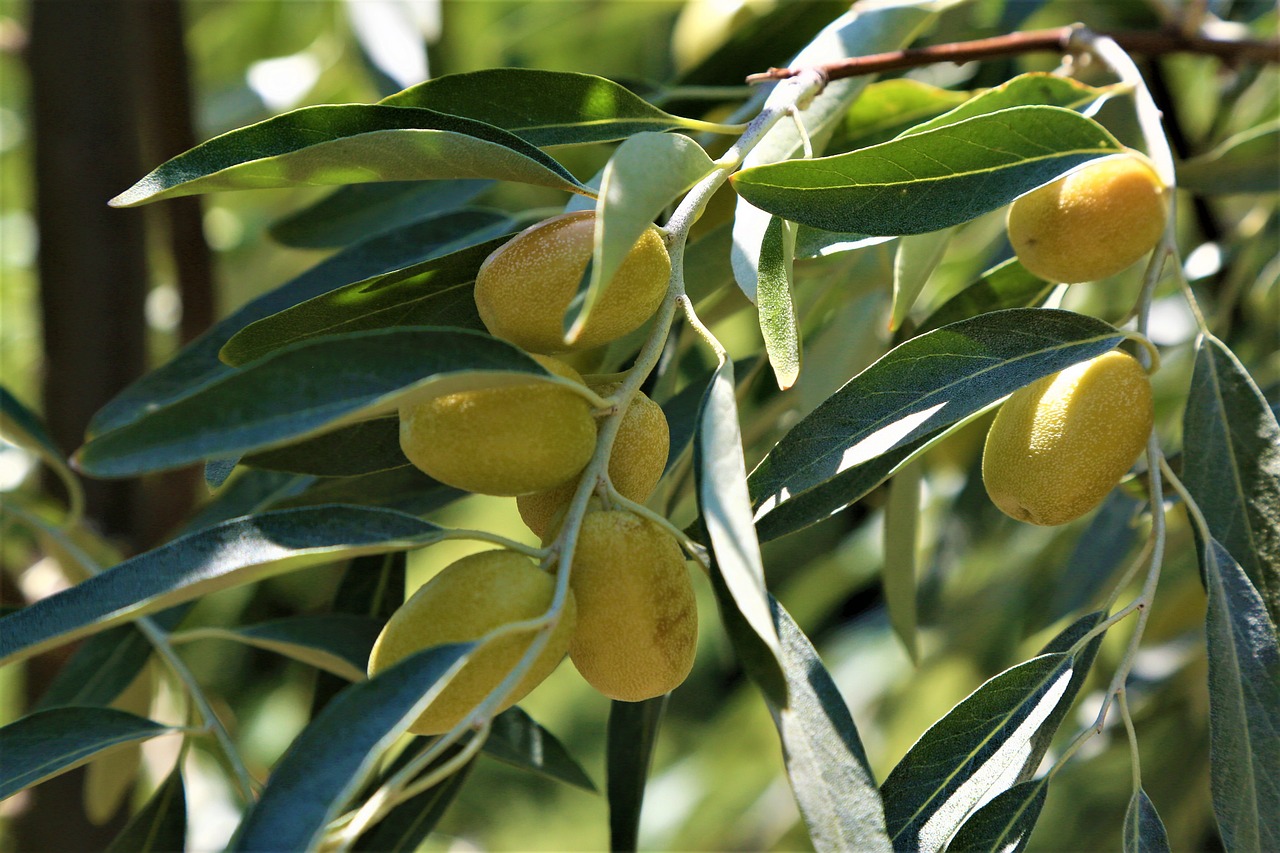Elaeagnus, also commonly called Oleaster or Russian Olive, is a woody shrub that can be both evergreen and deciduous.
They are related to the olive, with some having similar fruit and leaves.
The new growth can have a silvery sheen which is why it is also known as Silverberry or Silverthorn.
Elaeagnus can be cultivated as bonsai trees and the evergreen varieties are good for hedging.
They have small flowers that smell lovely.
Sometimes Elaeagnus plants can suddenly deteriorate and die.
So if you want an answer to “Why is my Eleagnus dying?” this article is for you!
Elaeagnus, also known as Oleaster or the Russian Olive, needs full sun and good drainage to thrive. They can be affected by pests such as the Elaeagnus Sucker and also several types of fungi.
Not Enough Sun
Elaeagnus is native to central and western Asia, and southern Europe.
They like full sun and warm temperatures.
They will tolerate semi shade, but Elaeagnus located in deep shade will likely show slightly leggy and less healthy growth.

How to fix:
- When planting Elaeagnus choose a sunny location with at least 6 hours of full sunshine.
- If you have an existing plant in a very shaded position consider moving it.
- Elaeagnus manage quite well with being moved as long as it is done carefully in the spring or autumn, so there is some moisture in the soil to help the roots establish.
- You could also prune or move any plants or structures that are shading your Elaeagnus, to allow more light.
Poor Drainage
This tends to be the most common problem with Elaeagnus as they can handle most conditions apart from water saturated soil.
They are even happy in fairly dry soil and tolerate salt, so they are great for coastal areas.
Waterlogged Elaeagnus foliage will start to turn yellow, the growth will become stunted and the roots can begin to rot.
How to fix:
- If you have soil that is prone to compacting and waterlogging like clay, add some stones, grit or sand to improve drainage.
- Don’t plant Elaeagnus anywhere that water collects, such as dips or depressions in the ground.
- If water is collecting around the base of your plant, try to redirect it away by using rocks or channels.
- Feel the soil before watering, and only water if dry.

Pests – Elaeagnus Sucker
This bug is a small brown winged Hemiptera insect that sucks the sap from Elaeagnus leaves and shoots.
Leaves look distorted, and may be covered in a sticky honeydew substance that then attracts a sooty mould.
How to fix:
- The Elaeagnus Sucker can cause some cosmetic damage but should not affect the health of the plant too much.
- You can wipe off the honeydew substance and mould with a very mild dish soap solution.
- Remove any leaves that are badly affected.
- Encourage biodiversity in your garden, as a wide variety of natural predators will manage pest populations successfully.

Fungus
There are several fungi that can affect Elaeagnus, and these usually take hold when conditions are warm, moist, or the roots are sitting in wet soil.
Leaf Spot – Often caused when conditions are warm and humid with no airflow, foliage develops black or brown spots with necrotic (dead) centres. Regularly clear all fallen debris from the base of the plant to maintain good airflow. Remove all infected leaves and dispose of (not in the compost heap). Sanitise all gloves and tools used. When watering, avoid splashing the leaves from above as this increases moisture on the leaves and also scatters spores up into the air. Gently water at the base with a watering can or hose instead.
Coral Spot – This fungus presents as small orange to pink pustules to form on dead woody stems. To try to prevent the development of this fungus, always prune with sharp, sterilised shears and only when the weather is dry. Remove any infected branches and dispose of (not in the compost heap).
Southern Blight – Can occur when conditions are warm and moist. This fungus travels through the soil and mainly affects younger Elaeagnus. The lower leaves start to wilt and discolour, and the stems then decompose and collapse. There will be a white fungal mould evident on the lower stem and roots. Remove all affected plants entirely as well as the surrounding soil. Dispose of (not in the compost heap). Santise all tools, shoes and gloves. The fungus can live in the soil for a long time so you can try to remove the pathogens by heating the soil on a sunny day. Lay a black tarpaulin over the area you want to treat and leave it there all day. The heat created under the tarp should help to kill the fungus if it reaches 50°C or 122°F.
Canker – Cankers are areas of dead or distorted tissue on twigs or stems, usually caused by entry of a fungal pathogen through a wound in the bark. To treat them, cleanly cut affected branches to 15cm below the canker, but only if the canker is not on the main stem. To prevent them, avoid accidental damage to the bark and remove any branches that are rubbing against each other, as over time this will cause a wound and allow infection in.
Root Rot – Root rot occurs when the roots sit in waterlogged soil. Poor drainage is often the cause, or overwatering, or both. The roots will begin to fail and ironically, cannot take in water. There will be sudden leaf drop, usually from the base of the plant. If the issue is not fixed the plant can die back entirely. Make sure your Elaeagnus in a sunny location and add grit or sand to your soil to improve drainage. Don’t plant Elaeagnus in a location that collects water or below the soil line.
Verticillium Wilt – This fungus lives in the soil and enters the plant via the roots. It then damages the circulatory (vascular) system. Leaves will wilt and turn yellow, sometimes just in one section. Branches can show dark staining under the bark, and a cross section will show brown or black circles. To rectify, you can try just cutting out the affected branches back to where the wood is healthy. Unfortunately Verticillium Wilt cannot be eradicated completely, so this may just delay the decline. Make sure the soil is well draining. Sanitise any tools used. If replanting in that location, choose Conifers, as they are resistant to Verticillium Wilt.

Final Thoughts
Elaeagnus (or Oleaster) is an excellent choice for coastal regions. Pair with Heather for a Mediterranean vibe.
They are very hardy and will only struggle if not provided with full sun and good drainage.
If you are having an issue with your Elaeagnus that I have not covered above, then please drop me a message with a description and I will do my best to help.


Hi. We planted 4 of these 1.5 yrs ago. 1 has already died and another is starting to shred its stems…is there anything we can do? Many thanks
Hi Suzanne,
Thanks for your query. Is the sick plant next to the one that died? It may be something that is spreading from plant to plant, either under the soil or from branch to branch. Did the leaves turn yellow first? I am wondering if it could be Verticillium Wilt which is a fungus in the soil that enters the plant through the roots, damages the circulation system that and causes sections of the plant to wilt and then die off. Do the affected branches show dark staining under the bark and brown or black circles in the cross section? You could try removing the affected Elaeagnus to try and stop the spread before it affects the other 3. Unfortunately Verticillium Wilt cannot be killed so an option could be to move the remaining Elaeagnus to a different spot in the hope they have not yet contracted the disease, and replace them with conifers in the original area as these are resistant to this type of fungus.
I hope this helps.
All the best,
Sue at My Garden Heaven
Hi. Thank you for your reply. Yes this seems to be what’s happening. The first trees leaves turned yellow and then the branches started to strip.
The poorly tree is next to the dead tree so makes sense, although there is another one the other side which is currently very healthy (this does not touch the dead tree, however the portly one does)
Unfortunately we no where else to go with the trees.
Should we remove the dead tree asap and prune the poorly one?
The drainage is not great where they are, could this be problem for them too?
Thank you very much for your help.
Hi Suzanne,
Yes I would remove the dead tree including the roots, and cut out the dead/dying parts of the sick tree. To be honest it may be best to remove the sick tree too in the hope that it halts the spread, but that’s your call. Sanitise any tools/gloves used before touching the healthy plants. Yes poor drainage can lead to the development and spread of fungus so if there’s any way you can try and improve that around the remaining trees it will definitely help. Dig in some stones or grit, and try to redirect pooling water by encouraging run off via channels.
All the best,
Sue at My Garden Heaven